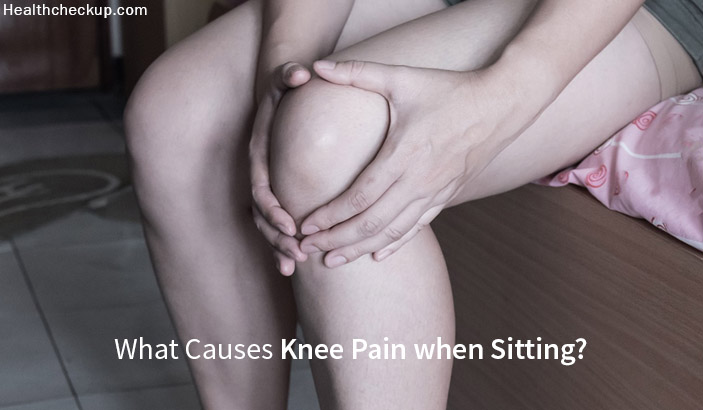To understand knee pain when sitting for too long or when sitting cross legged or on heels, we should first dive into the anatomy of the knee joint. Four main things constitute the knee joint which is bones, cartilage, ligament, tendons. Three bones meet to form the knee joint they are femur(thigh bone), tibia(shin bone) and patella( knee cap).
Two meniscus are wedge shaped pieces which act as shock absorbers. They provide a cushion and stabilize the joint.
Four ligaments act like strong ropes and hold the bones together. Collateral ligaments are on the side of your knee, the medial collateral ligament is on the inside. Whereas lateral collateral ligament is on the outside, the collateral ligaments control the sideways motion. The cruciate ligaments cross each other in front(anterior cruciate ligament) and back(posterior cruciate ligament), these take care of back and forth movement.
Having covered the basic anatomy of knee we can discuss the common complaints one comes across, that is a pain in the knee.
Knee Pain When Sitting Cross Legged
Pain in the knee while sitting cross legged makes one wonder. That is the reason for pain without any injury sustained by the knee.
The pain is sharp burning pain or stabbing in nature when sitting cross legged. Sometimes its bearable but you might just be doing more damage to it than you know. When we flex the knee collateral ligament become lax to allow twisting to occur this motion. However, it’s not possible while standing straight. When sitting cross legged the thigh bone rotates in the hip socket reaching its full range of movement when it cannot rotate anymore the stress passes onto the knee. The collateral ligaments being lax can take only a bit of the rotation. The damage is done to meniscus medially. One should pick up the hint body is saying in the form of pain and change sitting position. This should be kept in mind by people doing the yoga pose. And putting the knee through a lot more than it can handle.
Pain in the knee when sitting, often described as an aching in the knee. And maybe related to patellofemoral pain where the kneecap is inflamed due to rubbing on the bone underneath.
Patella Femoral Syndrome or Knee Pain When Sitting Too Long
Symptoms include an aching pain in the knee joint, particularly at the front of the knee around and under the patella. There is often tenderness along the inside border of the kneecap and swelling will sometimes occur after exercise. Patellofemoral pain is often worse when sitting for long periods of time. Cause of patellofemoral pain syndrome is likely to be overused. This may be from external factors, for example, a sudden increase in training, or performing high intensity jumping and knee bending, or it can be from internal factors such as poor patella tracking.
Patella pain treatment and rehabilitation are based on reducing symptoms, identifying the causes and strengthening or re-training muscles which may have contributed to the injury. Apply PRICE principles of protection, rest, ice, compression and elevation after activity to help reduce pain and swelling. Rest completely from aggravating activities until there is no pain. Wearing a patella tracking knee brace or support may help.
Pain in the Knee when Sitting on Heels
When you are sitting on heels the knee is in a state of hyperflexion. When your leg is in that position, the tissues of the knee (and its surrounding anatomy) are somewhat compressed. This means that blood is not flowing properly and nervous intention may be blocked. As a result, you can get the feeling of your leg “going to sleep”. You may also experience an uncomfortable pain sensation as the tissues are not properly innervated and blood flow is decreased. You may have noticed, once you move your legs to a different position (where the leg is somewhat straightened), blood flow returns and nervous impulse returns to normal.
Medically Reviewed By









